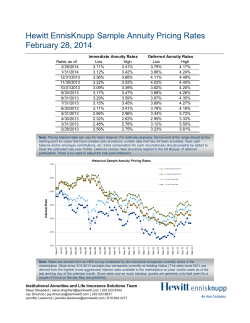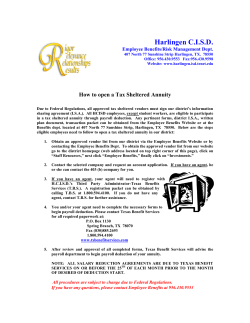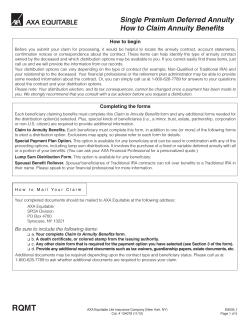
UNIVERSITY OF ILLINOIS AT URBANA-CHAMPAIGN Actuarial Science Program DEPARTMENT OF MATHEMATICS
UNIVERSITY OF ILLINOIS AT URBANA-CHAMPAIGN Actuarial Science Program DEPARTMENT OF MATHEMATICS Math 210 Theory of Interest Prof. Rick Gorvett Fall, 2014 Homework Assignment # 4 (max. points = 10) Due at the beginning of class on Thursday, October 9, 2014 You are encouraged to work on these problems in groups of no more than 3 or 4. However, each student must hand in her/his own answer sheet. Please show your work – enough to show that you understand how to do the problem – and circle your final answer. Full credit can only be given if the answer and approach are appropriate. Please give answers to two decimal places – e.g., xx.xx% and $xx,xxx.xx . Note: Homework assignments are due at the beginning of the class. Assignments will not be accepted after 9:45 am on the due date. (1) A 30-year annuity pays $200 every month. The nominal interest rate is i (2) = 9%. Find the present value of this annuity one month prior to the first payment. (2) A 20-year annuity pays $5,000 every calendar quarter. The interest rate is i (12) = 15%. Find the present value of this annuity three months prior to the first payment. (3) For 30 years, you make annual deposits into an account earning an annual effective interest rate of 6%. Your first deposit is $1,000, and thereafter each subsequent deposit is $500 higher than the previous deposit. Find the amount in your account one year after your last deposit. (4) A 30-year annuity is scheduled to make the following payments: $2,000 at the end of each of the first 10 years, and then payments at the end of years 11 through 30 are each $1,000 greater than the previous deposit. (Thus, the payment at t = 11 is $3,000, at t = 12 is $4,0000, etc.) The annual effective interest rate is 9%. Find the present value of this annuity one year before the first payment. (5) A 5-year annuity makes payments at the end of each month. The first payment is $10,000, and thereafter each subsequent monthly payment is X less than the previous payment. The interest rate is 10% effective annually. The present value of this annuity, one month prior to the first payment, is $350,000. Find X. (6) A perpetuity-immediate makes annual payments, with the first payment being $5,000, and each subsequent payment being $500 greater than the previous payment. At an effective annual interest rate of i, the present value of the annuity is $130,000. Find i. 1 (7) A jury decides to award an injured person a series of payments to compensate her for medical costs stemming from a car accident. The injured person is entitled to a 30-year annual-payment annuity which will pay $10,000 now, and then each subsequent annual payment will be 4% higher than the previous year’s payment (to offset future inflation). Assume that the effective annual interest rate is 9%. Find the present value, now, of this annuity. (8) Two growing perpetuities, each with annual payments, have the same yield rate (i.e., the same interest rate applies to both). The first perpetuity has an initial payment of $500 one year from now, and each subsequent annual payment increases by $500. The present value of this first perpetuity is $41,000. The second perpetuity – a perpetuity-due – has an initial payment of $500 now, and each subsequent annual payment increases by 5%. Find the present value, now, of the second perpetuity. (9) A 30-year annuity-immediate makes the following annual payments: $100 t $1,500 at times t = 1, 2, 3,…, 15. at times t = 16, 17, 18,…, 30 The effective annual interest rate is 8%. Find the present value of this annuity (at time t = 0). (10) A 20-year continuous-payment annuity pays at the rate of $10,000 per year. The effective annual interest rate is 14%. Find the present value of this annuity. 2
© Copyright 2025





















